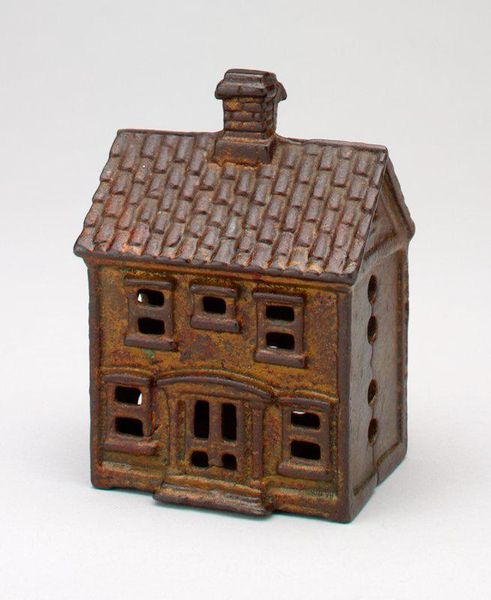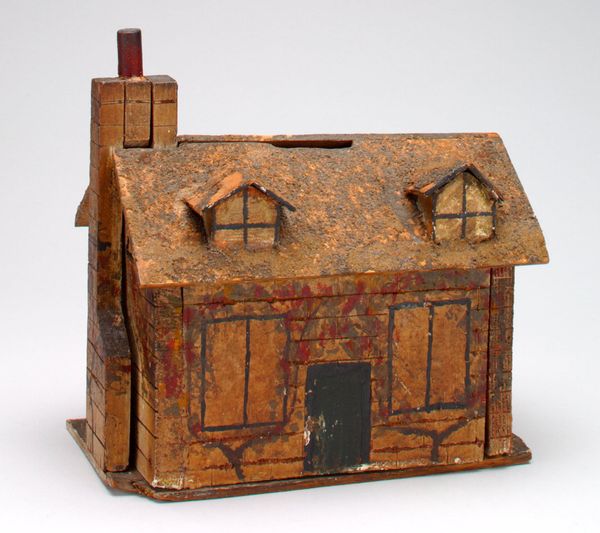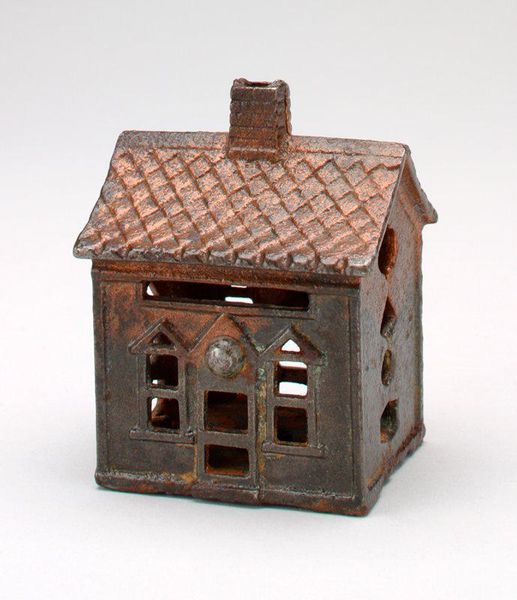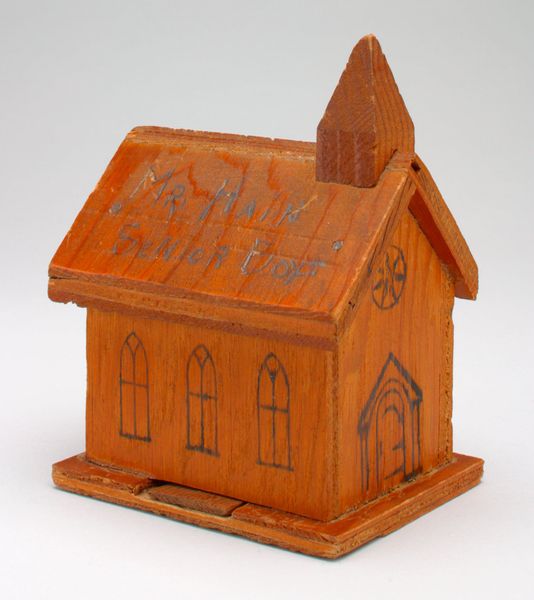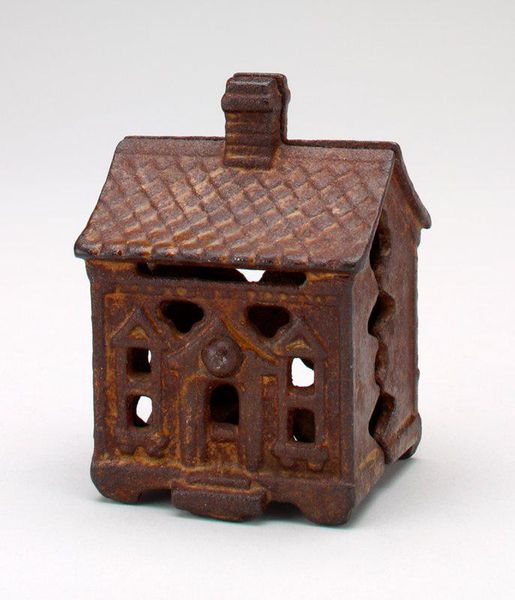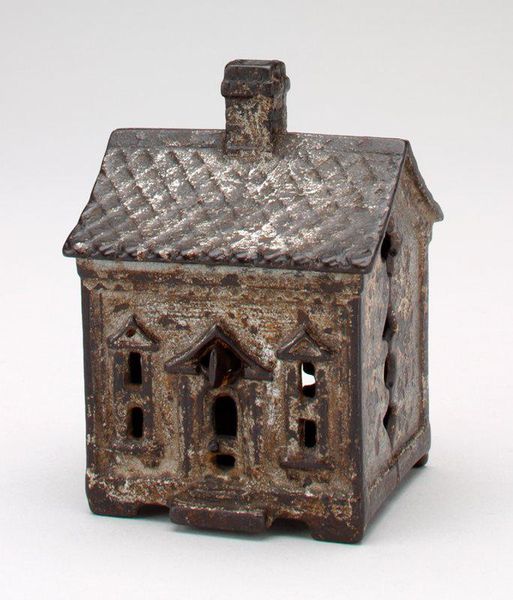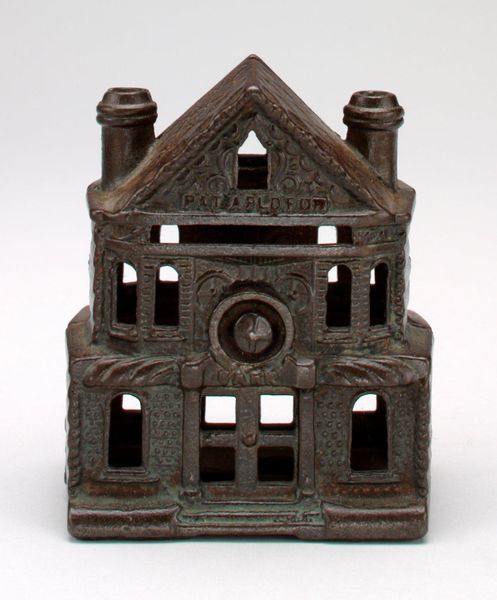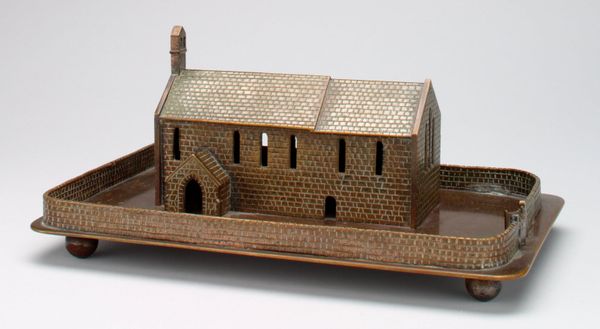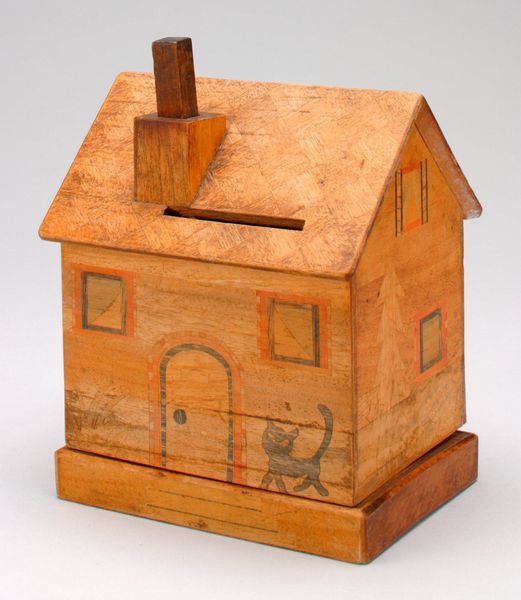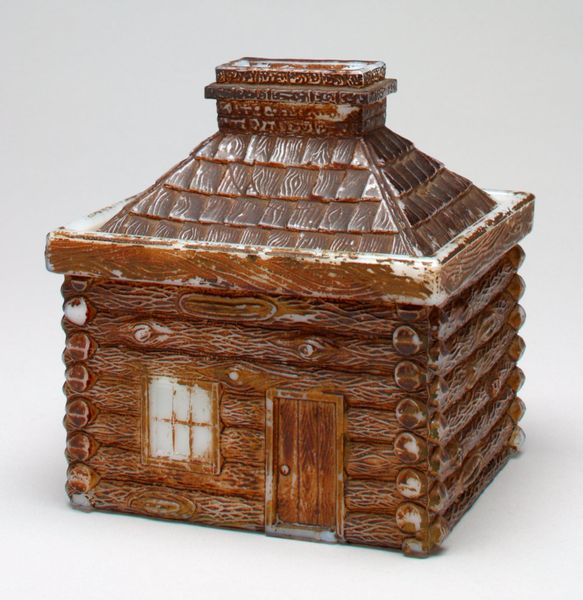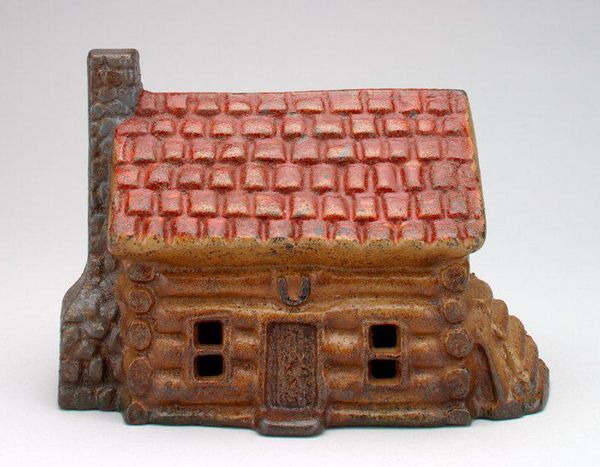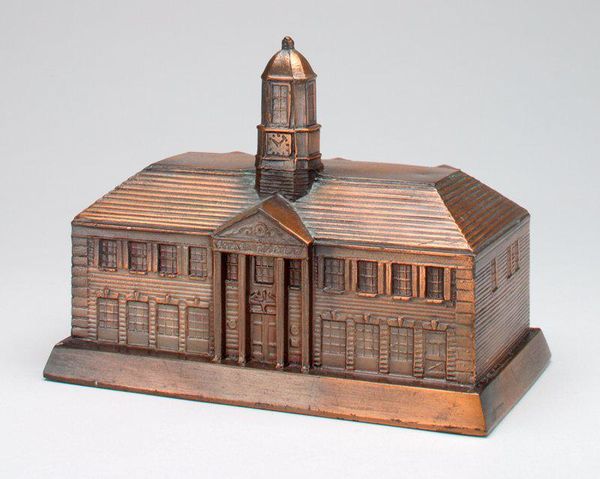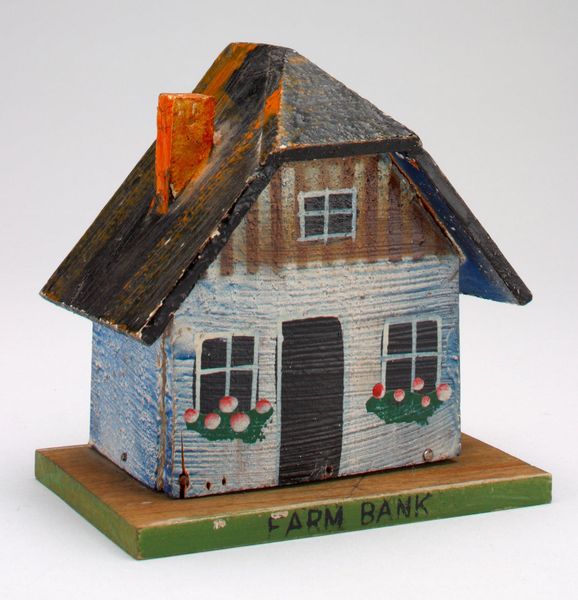
assemblage, metal, sculpture, wood
#
assemblage
#
metal
#
sculpture
#
folk-art
#
sculpture
#
united-states
#
wood
Dimensions: 2 5/8 x 3 7/16 x 2 3/4 in. (6.67 x 8.73 x 6.99 cm)
Copyright: Public Domain
Curator: What strikes me immediately is how diminutive this little cabin feels – so still and silent. It's charming, yes, but also a bit… forlorn. Editor: I agree. This folk-art object, dated to around 1885, is called -Log Cabin- still bank, currently housed at the Minneapolis Institute of Art. Constructed from both wood and metal, it speaks to a very specific time in the US. Curator: It looks like the kind of miniature thing you’d find in a dusty old antique store. You know, tucked away with the wind-up toys and slightly sinister dolls. What's so significant about it, historically speaking? Editor: Well, log cabins became potent symbols in 19th-century American political discourse, often linked to the "common man" narrative – think of presidents like Abraham Lincoln, whose humble origins were emphasized. This bank taps into that cultural narrative, while simultaneously promoting thriftiness and a very narrow vision of American life. Curator: It's almost absurd, this idea of compressing that narrative of the "American dream" into a child’s piggy bank! It's quaint and folksy, yet it feels like there's something slightly…off. Editor: Exactly. These objects can appear benign on the surface, but they are steeped in the rhetoric of nationalism and individual responsibility. A child dropping their pennies into the roof encourages certain notions of American identity. Curator: Now that you say that, I’m getting a little spooked. The little blank window stares. I thought the darkness added to the charm of this, the material's darkness and scale… but now I feel differently about it. Editor: It makes you think, doesn’t it? Whose ideals are being saved up here? What kind of "home" are we investing in, both literally and ideologically? Curator: Yes, it challenges the innocence of saving, framing it within the context of much broader narratives. What seems a quaint, folksy form of art reveals the relationship between constructed images, wealth, and the home. Editor: Indeed. It’s a reminder that even the simplest of objects can hold complex cultural meanings.
Comments
No comments
Be the first to comment and join the conversation on the ultimate creative platform.
